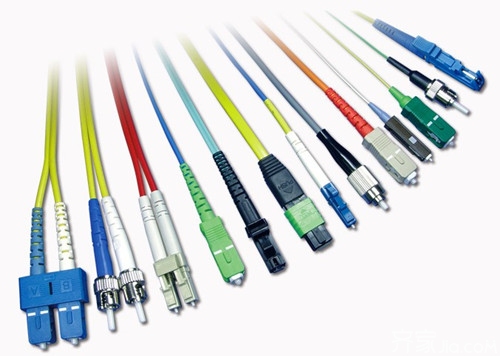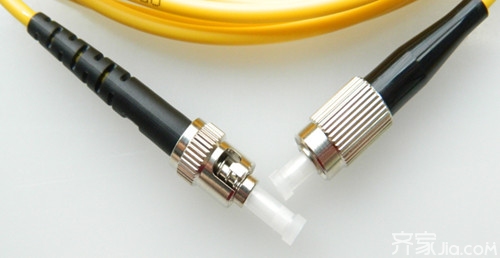Optical fiber transmission mode in which light can be divided into single-mode and multi-mode. The multimode fiber has a core diameter of 50 or 62.5 μm and a cladding outer diameter of 125 μm, expressed as 50/125 μm or 62.5/125 μm. The single-mode fiber has a core diameter of 8.3 μm and a cladding outer diameter of 125 μm expressed as 8.3/125 μm. Therefore, there are 62.5/125μm, 50/125μm, 9/125μm and other different types. Next Xiaobian introduced the difference between single-mode fiber and multi-mode fiber. What is single mode fiber Single Mode Fiber: The center glass core is very thin (the core diameter is usually 9 or 10 μm) and can only transmit one mode of light. Therefore, the dispersion between modules is very small, suitable for long-distance communication, but there are also material dispersion and waveguide dispersion, so that the single-mode optical fiber has higher requirements on the spectral width and stability of the light source, ie, the spectral width should be narrow and stable. Better. Later, at a wavelength of 1.31 μm, the material dispersion and waveguide dispersion of the single-mode fiber were found to be positive, negative, and exactly the same size. This means that at a wavelength of 1.31 μm, the total dispersion of a single-mode fiber is zero. From the fiber loss characteristics, 1.31μm is just a low-loss window of the fiber. In this way, the 1.31 μm wavelength region becomes a very ideal working window for optical fiber communication, and it is also the main operating band of practical optical fiber communication systems. The main parameters of the 1.31 μm conventional single-mode fiber are determined by the International Telecommunication Union ITU-T in the G652 recommendation, so this fiber is also called G652 fiber. What is multimode fiber Multi Mode Fiber: The center glass core is relatively thick (50 or 62.5 μm) and can transmit multiple modes of light. However, the dispersion between the modes is large, which limits the frequency of transmitting digital signals, and will increase with distance. For example: 600MB/KM fiber has only 300MB of bandwidth at 2KM. Therefore, the transmission distance of multi-mode optical fiber is relatively short, generally only a few kilometers. The difference between single mode fiber and multimode fiber 1. Multi-mode optical fiber is the most primitive technology of optical fiber communication, and later found a better single-mode optical fiber communication, so single-mode optical fiber communication is an improvement of multi-mode optical fiber. 2. Multi-mode light emitting devices are light emitting diodes, which have a wide spectrum of light, impure light waves, large dispersion of light transmission, and a small transmission distance. 1000 Mbit/s bandwidth transmission, reliable distance is 255 meters. The single-mode light emitting device is a laser, which has a narrow spectrum of light, pure wave, small dispersion of light transmission, and a long transmission distance. Wide bandwidth, usually more than 100 Gbit/s. The actual use is generally divided into 155M bit/s, 1.25G bit/s, 2.5G bit/s, and 10 Gbit/s. Single-mode lasers are divided into FP, DFB, CWDM three. FP lasers typically travel 60 kilometers, and DFB and CWDM lasers typically transmit 100 kilometers. 3. The digital optical transceiver adopts video uncompressed transmission technology. This transmission method has a large amount of information data. The optical transceivers of 4 or more video channels use data stream transmission of 1.25 Gbit/s or more, and the data flow of 8 video channels is as high as 1.5 Gbit. /s, The maximum bandwidth of multimode fiber is only 1 Gbit/s. If multimode fiber is used for transmission, information loss, large number of snowflakes or white spots in video images, and data control may be abnormal. The transmission distance is also insufficient. 4. The single-mode optical fiber communication technology has basically replaced the multi-mode optical fiber communication technology. The multi-mode optical fiber communication technology has rarely appeared in the market. Editor's summary: The difference between single-mode fiber and multi-mode fiber is introduced here. I hope to be helpful to everyone. If you want to know more related information, you can pay attention to this website information. Fiber optic cable
Optic Crystal End Fittings for Fiber Optic Curtain come in many shapes and sizes, from cylinder to glass balls. Crystal Fiber Optic End Fixture, mainly for the fiber optic chandelier and curtain, are fitted on the naked and clear PVC sheathed Strands of End Lit Fiber.
Fiber optic crystal fittings may or may not be necessary depending on your application. But crystal end light fittings are ideal for chandeliers and special projects are ideal for museum lighting, cabinets, staircases and illuminating walls, among others.
Optic Crystal End Fittings,Fiber Optic End Fixtures,Fiber Optic End Fittings,Fibre Optic End Fittings Jiangxi Daishing POF Co.,Ltd , https://www.jxopticfibrelight.com
